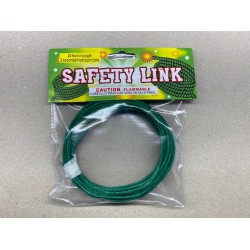
<table border="0" cellpadding="0" cellspacing="0" class="esmF" style="color: rgb(68, 68, 68); font-family: Verdana, sans-serif; font-size: 13.3333px; margin-bottom: 0px;" width="100%">
<tbody>
<tr>
<td style="font-size: 10pt; line-height: 1.4;">
<div align="left" class="esbSec" style="font-size: 10pt; line-height: 1.4; clear: both; margin-bottom: 15px;">
<div class="ptitle1" style="font-size: 10pt; line-height: 1.4; border-bottom: 5px solid rgb(0, 0, 0); padding-bottom: 4px; margin-bottom: 10px;">
<div class="ptitlei" style="font-size: 10pt; line-height: 1.4;">
<h1 class="esbH1" style="font-weight: bold; font-size: 14pt; margin: 0px 0px 8px; color: rgb(34, 34, 34);">colored stars</h1>
</div>
</div>
<div style="font-size: 10pt; line-height: 1.4; margin-top: 6px;"> </div>
</div>
</td>
</tr>
</tbody>
</table>
<table border="0" cellpadding="0" cellspacing="0" class="esmT esmF" style="color: rgb(68, 68, 68); font-family: Verdana, sans-serif; font-size: 13.3333px;" width="100%">
<tbody>
<tr class="esmR">
<td class="esmD" style="font-size: 10pt; line-height: 1.4;" valign="top" width="50%">
<div class="esmCol" style="font-size: 10pt; line-height: 1.4; margin-right: 10px; height: 0px;"> </div>
</td>
<td class="esmD" style="font-size: 10pt; line-height: 1.4;" valign="top" width="50%">
<div class="esmCol" style="font-size: 10pt; line-height: 1.4; margin-left: 10px; height: 0px;"> </div>
</td>
</tr>
</tbody>
</table>
<table border="0" cellpadding="0" cellspacing="0" class="esmF" style="color: rgb(68, 68, 68); font-family: Verdana, sans-serif; font-size: 13.3333px; margin-top: 0px; margin-bottom: 0px;" width="100%">
<tbody>
<tr>
<td style="font-size: 10pt; line-height: 1.4;">
<div align="left" class="esbSec" style="font-size: 10pt; line-height: 1.4; clear: both; margin-bottom: 15px;">
<h2><a name="chapter8" style="color: rgb(51, 153, 255);">Chapter 8: colored stars</a></h2>
<a name="chapter8" style="color: rgb(51, 153, 255);"></a>
<p><b><a name="chapter8" style="color: rgb(51, 153, 255);"></a>Red star #1</b><br />
<i>Source: </i>rec.pyrotechnics archive. Composition from Shimizu[1], page 215<br />
<i>Comments: </i>The perchlorate can be substituted by chlorate without changing the color.<br />
<i>Preparation:</i></p>
<p>Potassium perchlorate.............................66<br />
Red gum...........................................13<br />
Lampblack.........................................2<br />
Strontium carbonate...............................12<br />
Polyvinyl chloride................................2<br />
Soluble Glutinous Rice Starch.....................5</p>
<p><b>Red star #2</b><br />
<i>Source: </i><br />
<i>Comments: </i><br />
<i>Preparation: </i>Dissolve shellac in boiling ethanol, add the other ingredients and proceed as usual. The stars take unexpectedly long to dry. They can be dried in the sun or in a vacuum. Smaller stars dry faster.</p>
<p>Potassium chlorate................................20<br />
Strontium nitrate.................................60<br />
Shellac...........................................20</p>
<p><b>Red star #3</b><br />
<i>Source: </i><br />
<i>Comments: </i><br />
<i>Preparation: </i>Dissolve shellac in boiling ethanol, and add the other ingredients.</p>
<p>Potassium chlorate................................65<br />
Strontium carbonate...............................15<br />
Shellac...........................................20</p>
<p><b>Red star #4</b><br />
<i>Source: </i><br />
<i>Comments: </i><br />
<i>Preparation: </i>Dissolve shellac in boiling ethanol, and add the other ingredients.</p>
<p>Potassium perchlorate.............................44<br />
Strontium nitrate.................................31<br />
Red gum...........................................15<br />
Shellac (binder)..................................5<br />
PVC or saran .....................................8 or 7</p>
<p><b>Red star #5</b><br />
<i>Source: </i><br />
<i>Comments: </i><br />
<i>Preparation: </i>Add water. For priming "priming composition #7" from the chapter with miscellaneous compositions can be used.</p>
<p>Ammonium perchlorate..............................30<br />
Potassium perchlorate.............................35<br />
Strontium carbonate...............................18<br />
Hexamine..........................................2<br />
Charcoal, fine....................................2<br />
Red gum...........................................16<br />
Dextrin...........................................4</p>
<p><b>Red star #6</b><br />
<i>Source: </i>"The pyroguide" (a document found on internet)<br />
<i>Comments: </i>Dangerous mixture, since it contains both sulfur and a chlorate.<br />
<i>Preparation: </i>Bind with shellac dissolved in ethanol.</p>
<p>Potassium chlorate................................9<br />
Sulfur............................................2<br />
Lampblack.........................................1<br />
Strontium nitrate.................................9</p>
<p><b>Red star #7</b><br />
<i>Source: </i>post on rec.pyrotechnics by Tommy Hakomaki <tommy.hakomaki@mailbox.swipnet.se. Composition from an old swedish book.<br />
<i>Comments: </i><br />
<i>Preparation:</i></p>
<p>Potassium nitrate.................................36<br />
Sulfur............................................30<br />
Meal powder.......................................36<br />
Strontium nitrate.................................40<br />
Antimony sulfide..................................5<br />
Charcoal..........................................12</p>
<p><b>Red star #8</b><br />
<i>Source: </i>rec.pyrotechnics. Post by Andrew Krywonizka. Composition from Lancaster[2].<br />
<i>Comments: </i>Produce as a cut star<br />
<i>Preparation:</i></p>
<p>Potassium perchlorate.............................70<br />
Strontium carbonate...............................15<br />
Red gum...........................................9<br />
Charcoal 150 Mesh.................................2<br />
Dextrin...........................................4</p>
<p><b>Red star #9</b><br />
<i>Source: </i>rec.pyrotechnics. Post by Andrew Krywonizka. Composition from Lancaster[2].<br />
<i>Comments: </i>Produce as a pressed star<br />
<i>Preparation:</i></p>
<p>Strontium nitrate.................................55<br />
Magnesium.........................................28<br />
PVC...............................................17</p>
<p><b>Red star #10</b><br />
<i>Source: </i>PML, post by David Abate <daveab@ix.netcom.com.<br />
<i>Comments: </i>Crackling stars can be made with this composition. The poster used large pistol primers (idea from Best of AFN II), coated with 70%KClO4/30% Dark aluminum for cores, and rolled these into stars with the star mixture. The stars were hard to ignite and needed priming.<br />
<i>Preparation:</i></p>
<p>Potassium perchlorate.............................68<br />
Strontium carbonate...............................13<br />
Red gum...........................................14<br />
Dextrin...........................................5</p>
<p><b>Red star #11</b><br />
<i>Source: </i>rec.pyrotechnics archive. Composition from Shimizu[1], page 217. It's listed under the name "Red star brilliant".<br />
<i>Comments: </i><br />
<i>Preparation: </i>The magnesium must be coated with linseed oil. Use an acetone or alcohol solvable binder.</p>
<p>Potassium perchlorate.............................30<br />
Strontium nitrate (anhydride).....................20<br />
Magnesium, 60 mesh................................30<br />
PVC...............................................18<br />
Lampblack or Paulownia coal.......................2</p>
<p><b>Red star #12</b><br />
<i>Source: </i>rec.pyrotechnics archive. Composition from Shimizu[1], page 219. It's listed under the name "Ammon red star brilliant".<br />
<i>Comments: </i><br />
<i>Preparation:</i></p>
<p>Ammonium perchlorate..............................41<br />
Magnesium, 60 mesh................................33.3<br />
Red gum...........................................9.5<br />
Strontium carbonate...............................9.5<br />
Potassium bichromate..............................1.9<br />
Soluble glutinous rice starch.....................4.8</p>
<p><b>Green star #1</b><br />
<i>Source: </i>Composition from Shimizu[1], page 215<br />
<i>Comments: </i><br />
<i>Preparation:</i></p>
<p>Barium nitrate....................................28.3<br />
Potassium Perchlorate.............................47.2<br />
Parlon............................................4.7<br />
Red Gum...........................................14.2<br />
Soluble Glutinous Rice Starch.....................5.6</p>
<p><b>Green star #2</b><br />
<i>Source: </i><br />
<i>Comments: </i>A simple but nice (somewhat yellowish) green.<br />
<i>Preparation: </i>Dissolve shellac in boiling ethanol.</p>
<p>barium nitrate....................................7<br />
potassium chlorate................................7<br />
shellac...........................................2</p>
<p><b>Green star #3</b><br />
<i>Source: </i><br />
<i>Comments: </i>The composition leaves lots of ash. Ammonium perchlorate improves it (- Green star #4).<br />
<i>Preparation: </i>Mix Parlon with magnesium. Add 50 volume parts of acetone, mix well and mix in the other ingredients. If PVC is used, add the correct amount of the solution in THF to the other ingredients.</p>
<p>barium nitrate....................................50<br />
lab grade magnesium powder........................32<br />
Parlon or PVC.....................................18</p>
<p><b>Green star #4</b><br />
<i>Source: </i><br />
<i>Comments: </i><br />
<i>Preparation: </i>Mix Parlon with magnesium. Add 60 volume parts of acetone for Parlon, mix well and mix in the other ingredients. If PVC is used, add the correct amount of the solution in THF to the other ingredients.</p>
<p>barium nitrate....................................56<br />
lab grade magnesium powder........................32<br />
Parlon or PVC ....................................17<br />
ammonium perchlorate..............................25</p>
<p><b>Green star #5</b><br />
<i>Source: </i><br />
<i>Comments: </i>This mixture can be improved using ammonium perchlorate (Green star #6).<br />
<i>Preparation: </i>Add acetone. Prime with black powder. Aluminum should be very fine, preferably dark pyro grade.</p>
<p>Barium nitrate....................................65<br />
Aluminum (very fine)..............................10<br />
Parlon rubber.....................................20<br />
Sulfur............................................4<br />
Boric acid........................................2</p>
<p><b>Green star #6</b><br />
<i>Source: </i><br />
<i>Comments: </i>Fierce burning.<br />
<i>Preparation: </i>Add acetone. Prime with "Priming composition #7".</p>
<p>Barium nitrate....................................65<br />
Saran.............................................20<br />
Red gum...........................................3<br />
Sulfur............................................7<br />
Aluminum (very fine)..............................10<br />
Ammonium perchlorate..............................15<br />
Boric acid........................................2<br />
Dextrin...........................................2</p>
<p><b>Green star #7</b><br />
<i>Source: </i>PML, post by Charley Wilson <cwilson@celsvr.stortek.com.<br />
<i>Comments: </i>Beautiful green. Direct substitution of barium nitrate with strontium nitrate produces a nice red.<br />
<i>Preparation: </i>Dissolve shellac in boiling ethanol. Prime with potassium perchlorate based strobe prime</p>
<p>ammonium perchlorate..............................50<br />
barium nitrate....................................35<br />
shellac...........................................15</p>
<p><b>Green star #8</b><br />
<i>Source: </i>"The Pyroguide" (a document found on internet)<br />
<i>Comments: </i><br />
<i>Preparation: </i>Bind with alcohol.</p>
<p>Barium chlorate...................................8<br />
Lampblack.........................................1<br />
Shellac powder....................................1</p>
<p><b>Green star #9</b><br />
<i>Source: </i>"The Pyroguide" (a document found on internet)<br />
<i>Comments: </i><br />
<i>Preparation: </i>Bind with alcohol.</p>
<p>Barium nitrate....................................3<br />
Potassium chlorate................................4<br />
Shellac powder....................................1<br />
Dextrin...........................................1/4</p>
<p><b>Green star #10</b><br />
<i>Source: </i>post on rec.pyrotechnics by Tommy Hakomaki <tommy.hakomaki@mailbox.swipnet.se. Composition from an old swedish book.<br />
<i>Comments: </i><br />
<i>Preparation:</i></p>
<p>Potassium nitrate.................................35<br />
Sulfur............................................10<br />
Mealpowder........................................40<br />
Barium nitrate....................................50<br />
Charcoal..........................................10</p>
<p><b>Green star #11</b><br />
<i>Source: </i>rec.pyrotechnics, post by Bill Nelson <billn@peak.org, Composition from Davis[10].<br />
<i>Comments: </i>This formulation is based on one given by Clark, who's work is suspect.<br />
<i>Preparation:</i></p>
<p>Potassium perchlorate.............................6<br />
Barium perchlorate................................12<br />
Aluminum..........................................8<br />
Dextrin...........................................2<br />
Shellac...........................................1</p>
<p><b>Green star #12</b><br />
<i>Source: </i>rec.pyrotechnics,post by Bill Nelson <billn@peak.org, Composition from "Pyrotechnica VII"[3] by JW Stone.<br />
<i>Comments: </i><br />
<i>Preparation:</i></p>
<p>Potassium perchlorate.............................48<br />
Barium nitrate....................................32<br />
Red Gum...........................................14<br />
Charcoal..........................................2<br />
Parlon............................................12<br />
Dextrin...........................................6<br />
Sulfur............................................5</p>
<p><b>Green star #13</b><br />
<i>Source: </i>rec.pyrotechnics,post by Bill Nelson <billn@peak.org, Composition from "Pyrotechnica VII"[3] by JW Stone.<br />
<i>Comments: </i><br />
<i>Preparation:</i></p>
<p>Potassium perchlorate.............................28<br />
Barium nitrate....................................16<br />
Red Gum...........................................4<br />
Charcoal..........................................1<br />
Parlon............................................10<br />
Dextrin...........................................3<br />
Aluminum #809.....................................5</p>
<p><b>Green star #14</b><br />
<i>Source: </i>rec.pyrotechnics,post by Bill Nelson <billn@peak.org, Composition from "Pyrotechnica VII"[3] by T. Fish.<br />
<i>Comments: </i><br />
<i>Preparation:</i></p>
<p>Barium nitrate....................................65<br />
Parlon............................................20<br />
Pyro Aluminum.....................................10<br />
Red gum or sulfur.................................5<br />
Boric acid........................................+2</p>
<p><b>Green star #15</b><br />
<i>Source: </i>PML, post by Bill Ofca <ofca@csbh.mhv.net<br />
<i>Comments: </i>Original name: 'Emerald green'. The mix is not very sensitive although chlorates are present.<br />
<i>Preparation: </i>Dampen with 75/25 water/alcohol and cut or roll into 10mm stars. The red gum can be replaced with shellac. If shellac is used, dampen with 50/50 water alcohol.</p>
<p>Potassium perchlorate.............................22<br />
Barium chlorate...................................43<br />
Barium nitrate....................................9<br />
Red gum...........................................22<br />
Dextrin...........................................4</p>
<p><b>Green star #16</b><br />
<i>Source: </i>rec.pyrotechnics archive. Composition from Shimizu[1], page 218. It's listed under the name "Green star brilliant".<br />
<i>Comments: </i><br />
<i>Preparation: </i>The magnesium must be coated with linseed oil. Use an acetone or alcohol solvable binder.</p>
<p>Potassium perchlorate.............................16<br />
Barium nitrate....................................42<br />
Magnesium, 60 mesh................................25<br />
PVC...............................................15<br />
Lampblack or Paulownia coal.......................2</p>
<p><b>Green star #17</b><br />
<i>Source: </i>rec.pyrotechnics archive. Composition from Shimizu[1], page 219. It's listed under the name "Ammon green star brilliant".<br />
<i>Comments: </i><br />
<i>Preparation: </i>The magnesium must be coated with potassium dichromate.</p>
<p>Ammonium perchlorate..............................41<br />
Magnesium, 60 mesh................................33.3<br />
Red gum...........................................9.5<br />
Barium carbonate..................................9.5<br />
Potassium bichromate..............................1.9<br />
Soluble glutinous rice starch.....................4.8</p>
<p><b>Blue star #1</b><br />
<i>Source: </i>rec.pyrotechnics archive, post by LNiksch <lniksch@aol.com Composition from Shimizu[1], page 216. Listed under the name "blue star II"<br />
<i>Comments: </i>LNiksch :"These stars burn much faster and more blue than any mix containing copper carbonate I have tried"<br />
<i>Preparation: </i>Dampen with alcohol/water 70/30 to make cut or pumped stars.</p>
<p>Potassium perchlorate.............................66.5<br />
Red gum...........................................9.9<br />
Cupric oxide......................................13.4<br />
Parlon............................................5.4<br />
Soluble Glutinous Rice Starch or Dextrin .........5.6 or 4.8</p>
<p><b>Blue star #2</b><br />
<i>Source: </i><br />
<i>Comments: </i><br />
<i>Preparation: </i>Add 25 volume parts of water to dextrin and mix in the other ingredients. Use more water if necessary.</p>
<p>Ammonium perchlorate..............................60<br />
Sulfur............................................17<br />
Copper(II)oxide...................................20<br />
Dextrin (binder)..................................3<br />
Red gum or Shellac................................6</p>
<p><b>Blue star #3</b><br />
<i>Source: </i><br />
<i>Comments: </i><br />
<i>Preparation: </i>Mix red gum or shellac powder with Parlon. Add 50 volume parts of acetone, mix well and mix in the other ingredients.</p>
<p>potassium perchlorate.............................63<br />
copper(II)oxide...................................13<br />
Red gum or Shellac (powdered).....................10<br />
Parlon or PVC.....................................14</p>
<p><b>Blue star #4</b><br />
<i>Source: </i><br />
<i>Comments: </i><br />
<i>Preparation:</i></p>
<p>potassium perchlorate.............................65<br />
cuprous chloride (CuCl)...........................16<br />
sulfur............................................10<br />
Red gum...........................................7<br />
Parlon or PVC.....................................11 or 12</p>
<p><b>Blue star #5</b><br />
<i>Source: </i><br />
<i>Comments: </i><br />
<i>Preparation: </i>Add the PVC solution to the other ingredients. Allow some THF to evaporate, form a cake 1 cm thick and allow it to dry on a plastic plate (check that it doesn't dissolve in THF!). Remove the dry cake and cut it into stars with a pair of scissors.</p>
<p>Ammonium perchlorate..............................63<br />
Copper(II)oxide...................................13<br />
Sulfur............................................10<br />
Dextrin...........................................10<br />
PVC...............................................12</p>
<p><b>Blue star #6</b><br />
<i>Source: </i>"The Pyroguide" (a document found on internet)<br />
<i>Comments: </i>Dangerous mixture since it contains both sulfur and a chlorate.<br />
<i>Preparation: </i>Bind with dextrin in water.</p>
<p>Potassium chlorate................................9<br />
Copper Acetonarsenite.............................2<br />
Mercurous chloride................................1<br />
Sulfur............................................2</p>
<p><b>Blue star #7</b><br />
<i>Source: </i>"The Pyroguide" (a document found on internet)<br />
<i>Comments: </i>This one is inferior to "Blue star 6". Dangerous mixture since it contains both sulfur and a chlorate.<br />
<i>Preparation: </i>Bind with dextrin in water.</p>
<p>Potassium chlorate................................12<br />
Copper sulfate....................................6<br />
Lead chloride.....................................1<br />
Sulfur............................................4</p>
<p><b>Blue star #8</b><br />
<i>Source: </i>rec.pyrotechnics. Posted by Tommy Hakomaki <tommy.hakomaki@mailbox.swipnet.se<br />
<i>Comments: </i><br />
<i>Preparation:</i></p>
<p>Potassium nitrate.................................40<br />
Sulfur............................................12<br />
Mealpowder........................................40<br />
Copper-ammonium nitrate...........................30<br />
Charcoal..........................................10<br />
Rosin.............................................5</p>
<p><b>Blue star #9</b><br />
<i>Source: </i>Composition from Shimizu[1], page 216. Listed under the name 'blue star I'<br />
<i>Comments: </i><br />
<i>Preparation:</i></p>
<p>Potassium perchlorate.............................60.8<br />
Red Gum...........................................9.0<br />
Basic copper carbonate............................12.3<br />
Parlon............................................13.1<br />
Soluble glutinous rice starch.....................4.8</p>
<p><b>Blue star #10</b><br />
<i>Source: </i>PML, posted by David Abate <daveab@ix.netcom.com.<br />
<i>Comments: </i>Crackling stars can be made with this composition. The poster used large pistol primers (idea from Best of AFN II), coated with 70%KClO4/30% Dark aluminum for cores, and rolled these into stars with the star mixture. The stars were hard to ignite and needed priming. The color is a bit pale blue.<br />
<i>Preparation:</i></p>
<p>Potassium perchlorate.............................61<br />
Copper carbonate..................................12<br />
Parlon............................................13<br />
Red gum...........................................9<br />
Dextrin...........................................5</p>
<p><b>Blue star #11</b><br />
<i>Source: </i>"Pyrotechnica #6"[3]<br />
<i>Comments: </i>This composition seems just a slight modification of "Blue star #1".<br />
<i>Preparation:</i></p>
<p>Potassium perchlorate.............................67.3<br />
Red gum...........................................10.0<br />
Copper oxide......................................13.6<br />
Parlon............................................9.1<br />
Rice starch.......................................4.5</p>
<p><b>Blue star #12</b><br />
<i>Source: </i>PML, posted by Charley Wilson <cwilson@celsvr.stortek.com<br />
<i>Comments: </i><br />
<i>Preparation:</i></p>
<p>Ammonium perchlorate..............................70<br />
Copper(II)oxide...................................15<br />
Shellac...........................................15</p>
<p><b>Blue star #13</b><br />
<i>Source: </i>Greg Gallacci <psygreg@u.washington.edu<br />
<i>Comments: </i>Makes a bright, robins-egg blue star, with a bushy flame.<br />
<i>Preparation:</i></p>
<p>Potassium perchlorate.............................70<br />
Silicone..........................................10<br />
Copper(II)oxide...................................10<br />
PVC...............................................15</p>
<p><b>Blue star #14</b><br />
<i>Source: </i>rec.pyrotechnics. Post by Erik D. Suni <esuni@lk-hp-26.hut.fi. Composition is a slightly modified version from a composition from "The best of AFN II"[14].<br />
<i>Comments: </i><br />
<i>Preparation: </i>Moisten with water, and cut into 6 mm stars. Do not prime with meal powder. Use a potassium perchlorate based prime instead.</p>
<p>Potassium chlorate................................65<br />
Copper oxychloride................................12.5<br />
Lactose...........................................12.5<br />
Dextrin...........................................5<br />
Saran.............................................5</p>
<p><b>Blue star #15</b><br />
<i>Source: </i>rec.pyrotechnics, post by Greg A. Gallacci <psygreg@u.washington.edu<br />
<i>Comments: </i>Fimo is a PVC based modelling clay. The stars are brilliant blue ("Cop-lites blue"), with edges of flame tinted salmon. The stars need priming.<br />
<i>Preparation: </i>Warm the Fimo slightly, to make it more mixable and mix it with the ammonium perchlorate without using solvents. Then mix in the malachite. Screen it several times and make pressed stars.</p>
<p>Ammonium perchlorate..............................70<br />
Fimo..............................................20<br />
Malachite, powdered...............................10</p>
<p><b>Blue star #16</b><br />
<i>Source: </i>rec.pyrotechnics<br />
<i>Comments: </i><br />
<i>Preparation:</i></p>
<p>Potassium Perchlorate.............................60<br />
Copper Carbonate..................................20<br />
PVC...............................................15<br />
Dextrin...........................................5</p>
<p><b>Purple star #1</b><br />
<i>Source: </i>"The Pyroguide" (a document found on internet)<br />
<i>Comments: </i>Dangerous mixture since it contains both sulfur and a chlorate.<br />
<i>Preparation: </i>Bind with dextrin in water. The ingredients must be very pure.</p>
<p>Potassium chlorate................................36<br />
Strontium sulfate.................................10<br />
Copper sulfate....................................5<br />
Lead chloride.....................................2<br />
Charcoal..........................................2<br />
Sulfur............................................12</p>
<p><b>Purple star #2</b><br />
<i>Source: </i>"The Pyroguide" (a document found on internet)<br />
<i>Comments: </i>Dangerous mixture since it contains both sulfur and a chlorate.<br />
<i>Preparation: </i>Bind with dextrin in water. The ingredients must be very pure.</p>
<p>Potassium chlorate................................38<br />
Strontium carbonate...............................18<br />
Copper chloride...................................4<br />
Lead chloride.....................................2<br />
Sulfur............................................14</p>
<p><b>Purple star #3</b><br />
<i>Source: </i>Composition from Shimizu[1], page 216. Listed under the name "Violet star I".<br />
<i>Comments: </i><br />
<i>Preparation:</i></p>
<p>Potassium perchlorate.............................61.3<br />
Red gum...........................................9.1<br />
Basic copper carbonate............................5.0<br />
Strontium carbonate...............................7.4<br />
Parlon............................................12.4<br />
Soluble glutinous rice starch.....................4.8</p>
<p><b>Purple star #4</b><br />
<i>Source: </i>Composition from Shimizu[1], page 216. Listed under the name "Violet star II" .<br />
<i>Comments: </i><br />
<i>Preparation:</i></p>
<p>Potassium perchlorate.............................64.0<br />
Red gum...........................................9.5<br />
Copper(II)oxide...................................5.2<br />
Strontium carbonate...............................7.8<br />
Parlon............................................8.7<br />
Soluble glutinous rice starch.....................4.8</p>
<p><b>Yellow star #1</b><br />
<i>Source: </i><br />
<i>Comments: </i><br />
<i>Preparation: </i>Mix dextrin with 4 volume parts of water and mix in the other ingredients.</p>
<p>Potassium chlorate................................6<br />
Sodium hydrogen carbonate.........................2<br />
Dextrin...........................................2</p>
<p><b>Yellow star #2</b><br />
<i>Source: </i>"The Pyroguide" (a document found on internet)<br />
<i>Comments: </i><br />
<i>Preparation: </i>Bind with shellac in ethanol or dextrin in water.</p>
<p>Potassium chlorate................................8<br />
Sodium oxalate....................................3<br />
Lampblack.........................................2</p>
<p><b>Yellow star #3</b><br />
<i>Source: </i>"The Pyroguide" (a document found on internet)<br />
<i>Comments: </i><br />
<i>Preparation: </i>Bind with alcohol.</p>
<p>Potassium chlorate................................8<br />
Sodium oxalate....................................4<br />
Shellac powder....................................2<br />
Dextrin...........................................1</p>
<p><b>Yellow star #4</b><br />
<i>Source: </i>rec.pyrotechnics, posted by Tommy Hakomaki <tommy.hakomaki@mailbox.swipnet.se.<br />
<i>Comments: </i><br />
<i>Preparation:</i></p>
<p>Potassium nitrate.................................48<br />
Sulfur............................................24<br />
Mealpowder........................................60<br />
Charcoal..........................................10<br />
Rosin.............................................2</p>
<p><b>Yellow star #5</b><br />
<i>Source: </i>Composition from Shimizu[1], page 215.<br />
<i>Comments: </i><br />
<i>Preparation:</i></p>
<p>Potassium perchlorate.............................68<br />
Red gum...........................................18<br />
Lampblack.........................................2<br />
Sodium nitrate....................................7<br />
Soluble glutinous rice starch.....................5</p>
<p><b>Yellow star #6</b><br />
<i>Source: </i>rec.pyrotechnics archive. Composition from Shimizu[1], page 217. It's listed under the name "Yellow star brilliant".<br />
<i>Comments: </i><br />
<i>Preparation: </i>The magnesium must be coated with linseed oil. Use an acetone or alcohol solvable binder.</p>
<p>Potassium perchlorate.............................45<br />
Ultramarine.......................................13<br />
Magnesium, 60 mesh................................30<br />
PVC...............................................10<br />
Lampblack or Paulownia coal.......................2</p>
<p><b>Yellow star #7</b><br />
<i>Source: </i>rec.pyrotechnics archive. Composition from Shimizu[1], page 219. It's listed under the name "Ammon yellow star brilliant".<br />
<i>Comments: </i><br />
<i>Preparation: </i>The magnesium must be coated with potassium dichromate.</p>
<p>Ammonium perchlorate..............................41<br />
Magnesium, 60 mesh................................33.3<br />
Red gum...........................................9.5<br />
Ultramarine.......................................9.5<br />
Potassium bichromate..............................1.9<br />
Soluble glutinous rice starch.....................4.8</p>
<p><b>Orange star #1</b><br />
<i>Source: </i>"The Pyroguide" (a document found on internet)<br />
<i>Comments: </i>Dangerous mixture since it contains both sulfur and a chlorate.<br />
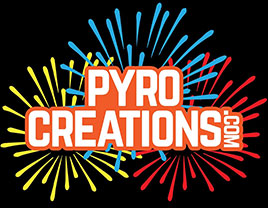


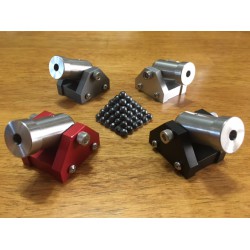

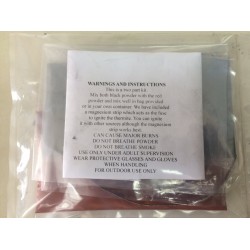
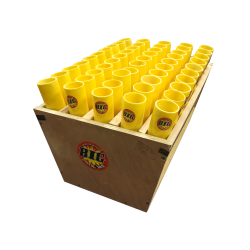



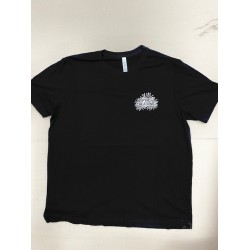

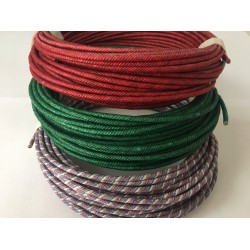
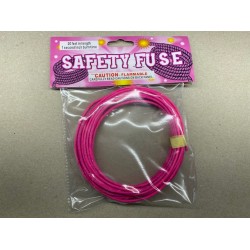
-250x250.jpg)
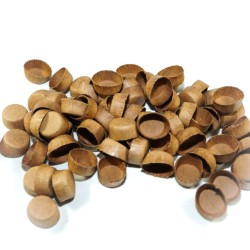
-250x250w.jpeg)
